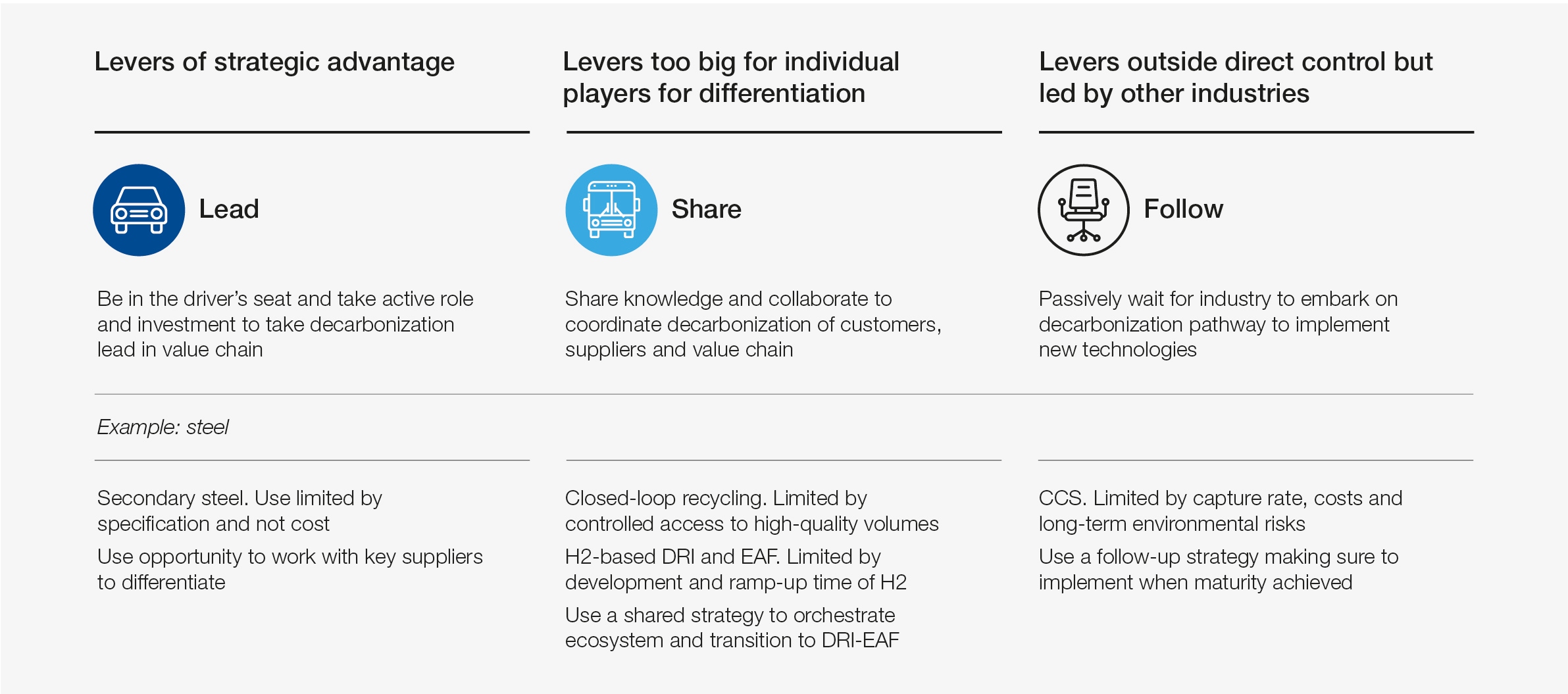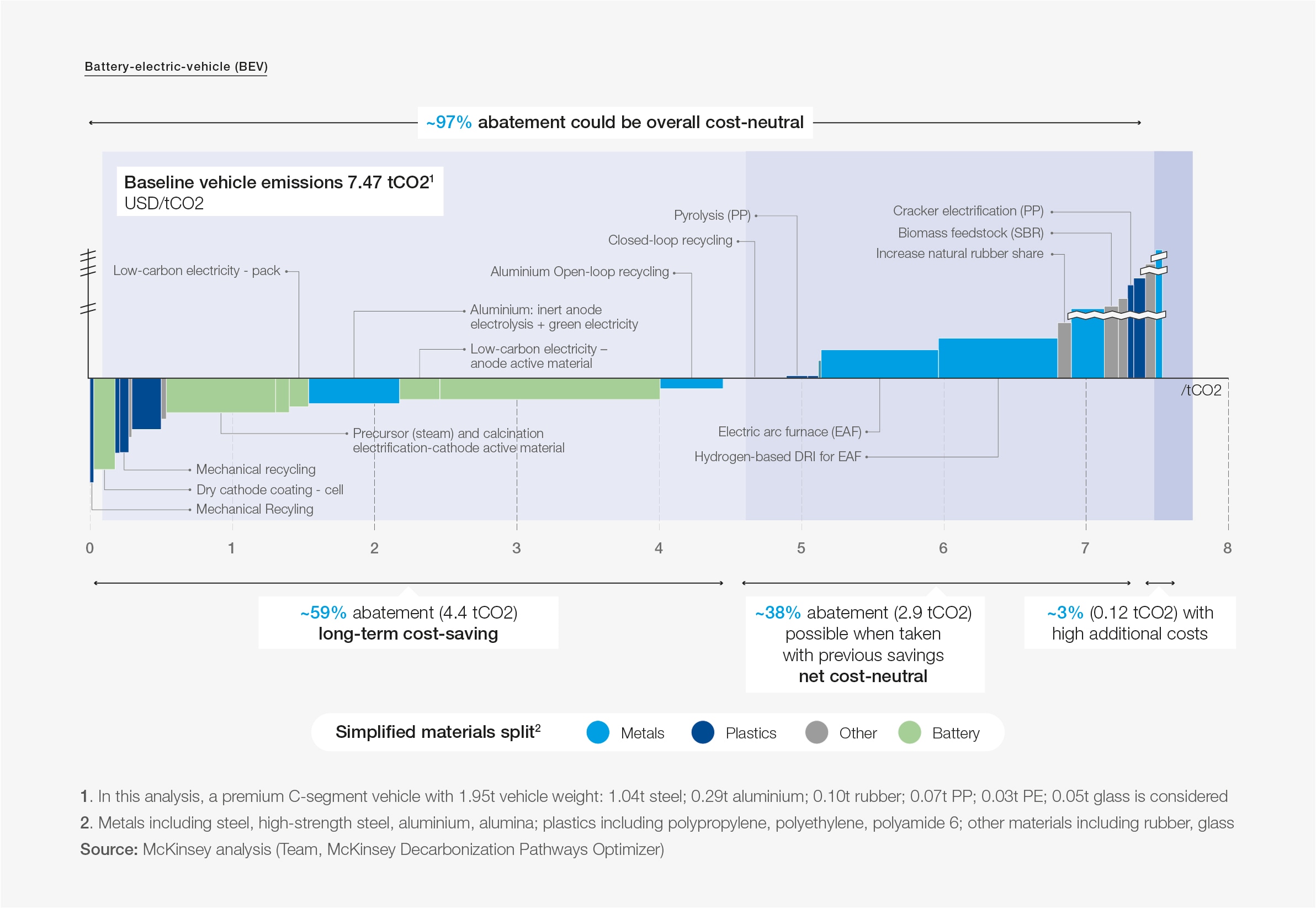In early December, the European Union announced it would slash at least 55 percent of carbon emissions by 2030, up from the previous target of 40 percent. Proponents of the agreement lauded the consensus, while some climate activists expressed doubt on reaching such an ambitious goal.
Indeed, the targets are aggressive, and require a large-scale transformation of a number of industries—including the automotive industry. Such changes are possible with a new approach to collaboration – and competition.
Manufacturing’s role in tackling emissions
Many stakeholders are working hard to curb the auto industry’s emissions by getting at least 30 million zero-emission cars on European roads by 2030, which the European Commission laid out in its recently published “sustainable and smart” mobility strategy. This is coupled with recently proposed legislation that would make electric vehicle (EV) batteries more sustainable. However, as powertrains electrify, the largest contributor of automotive carbon emissions won’t be from the tailpipe but from the production of materials that make up the car. In fact, by 2030, at least one-third of carbon emissions in vehicles will come from material production. But the decarbonization of materials production is similarly crucial, and the pathway to the zero-carbon value chain remains unclear.
Beyond electrifying powertrains, achieving automotive decarbonization requires an equal focus on material production. While Electric Vehicles can significantly reduce use phase emissions, the energy- and emission- intensive production of materials – particularly batteries – will place new demand on the industry’s efforts for decarbonization.
A new approach for manufacturing
In this context, the only way to achieve the 2030 emissions target—and other targets outlined in the European Green Deal—is for the auto value chain to radically reinvent itself. To this end, original equipment manufacturers will need to make internal changes. They will have to:
- Establish transparency: Manufacturers must create transparency on the emissions embedded in their upstream activities.
- Educate and train: They’ll have to help engineers understand the carbon impacts of design decisions and incorporate carbon targets alongside established industry metrics such as cost and performance.
- Rebuild teams: They must also rebuild their procurement teams to work with suppliers and sub-suppliers to achieve high emissions performance standards.
A new approach to industry collaboration
Much of this will take an unprecedented amount of trust and collaboration as industry participants establish new ways of working together. To reach emissions goals, they must:
- Achieve alignment: Industry participants need to align industry-wide goals and milestones.
- Rethink supply chains: Participants will need to identify critical changes that need to be made in the value chain, like rethinking the end of life of a vehicle, which right now is left up to individual manufacturers.
- Re-build industry practices and norms: Participants must develop industry-wide standards and approaches to collaboration that focus on sustainability while protecting each player’s ability to compete. The industry is rife with opportunity for pre-competitive collaboration that can make a significant impact on industry emissions.
This need for collaboration comes at a time, ironically, when competition for the latest and greatest innovation in car manufacturing is at an all-time high. However, current approaches that emphasize competition may be an obstacle to decarbonization.
However, if players get collaboration right, they will pave the way for the cross-industry transformations necessary to limit global warming. A new systemic model of collaboration – where materials manufacturers actively lead and invest in decarbonization, and where participants share knowledge and follow best-practices established by other sectors – can create the right incentives to make big change happen.

To be sure, the scale of this undertaking sounds expensive. But our research published in our new report Forging Ahead: A materials roadmap for the zero-carbon car, shows that significant abatement is possible for the auto industry with very little additional added vehicle material cost.
In fact, we expect that by 2030, over 50% of abatement could actually amount to ‘win-wins’ providing cost savings.
For example, some secondary materials already offer both a cost and a carbon benefit in certain applications, such as with cast aluminum. And further, fully 97% of abatement could be achieved cost-neutral, i.e. the cost savings are balanced by the additional on cost for some abatement technologies. In fact, our research shows that some already available abatement approaches—like increased secondary materials—can save on costs while reducing emissions.
This research is from one of three recently released reports by the Circular Cars initiative, a coalition of more than 60 automakers, suppliers, research institutions, NGOs and international organizations committed to realizing circularity in the sector. This series of circularity “roadmaps” was developed in collaboration with McKinsey as well as the World Economic Forum, the World Business Council for Sustainable Development and Accenture Strategy.

We believe that by the end of the decade, a majority of embedded emissions can be eliminated without adding additional costs—if the savings from available approaches are re-invested in further decarbonization efforts.
This is the industry’s next grand challenge, and we must attack it in a way that’s never been done before. If we don’t, we will have to watch the ambitious 55% carbon emissions goal go up in smoke.
To learn more, read the report “Forging Ahead: A materials roadmap for the zero-carbon car.” This article originally appeared on the World Economic Forum’s Agenda blog.

